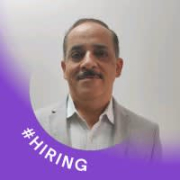

SolarWinds Virtualization Manager and Veeam Data Platform engage in the virtualization and data protection category, with Veeam often favored for its comprehensive protection capabilities.
Features: SolarWinds Virtualization Manager offers robust performance monitoring, in-depth capacity planning, and advanced alerting systems. Its monitoring capabilities include seeing VM-level IOPS data without agent use. Veeam Data Platform provides unparalleled data replication, instant recovery options, and strong data protection measures for backup solutions.
Room for Improvement: SolarWinds could enhance its integration options and user interface for more intuitive navigation. Its alert system and reporting capabilities may benefit from additional customization options. Veeam could simplify its configuration process and improve its support for diverse infrastructure environments. It might also expand its support for additional cloud platforms and improve the speed of some complex backup operations.
Ease of Deployment and Customer Service: SolarWinds Virtualization Manager features a smooth installation process and easy integration with existing infrastructures, providing a more intuitive setup experience. In comparison, Veeam Data Platform offers extensive support and robust recovery capabilities, yet may require more complex configuration due to its wide range of functionalities.
Pricing and ROI: SolarWinds Virtualization Manager tends to have a lower initial cost, appealing to users focused on virtualization insights rather than extensive data protection. In contrast, Veeam Data Platform's higher pricing reflects its comprehensive feature set, with many users finding long-term value in its advanced backup and recovery capabilities. SolarWinds tends to offer a quicker ROI in environments focused on virtual performance.
| Product | Market Share (%) |
|---|---|
| Veeam Data Platform | 8.9% |
| SolarWinds Virtualization Manager | 9.4% |
| Other | 81.7% |


| Company Size | Count |
|---|---|
| Small Business | 2 |
| Midsize Enterprise | 2 |
| Large Enterprise | 3 |
| Company Size | Count |
|---|---|
| Small Business | 217 |
| Midsize Enterprise | 99 |
| Large Enterprise | 139 |
Veeam Data Platform is a leader in data resilience, providing businesses with reliable and secure backup, recovery, and advanced data insights. It is designed to combat today's cyber threats while ensuring data remains protected, adaptable, and recoverable.
Engineered to offer a seamless and powerful data resilience experience, Veeam Data Platform helps organizations with intelligent protection beyond just backup. It enables orchestrated and verifiable recovery processes, helping maintain continuous operations. By offering integrated solutions against evolving cyber threats, this platform assures businesses of data availability and precision restoration, empowering them to remain resilient under any circumstances. Its robust security features, coupled with efficient replication and deduplication benefits, deliver confidence in data management across hybrid and cloud deployments.
What features make Veeam Data Platform stand out?Veeam Data Platform is primarily used for managing backup and replication across VMware and Hyper-V environments, supporting both cloud and on-premises infrastructures. In industries managing significant IT services, it assists in disaster recovery and virtual machine protection, enhancing business continuity. Its integration with applications like Microsoft Office 365 ensures reliable data protection and quick recovery, making it beneficial for those looking to streamline operations across diverse deployment scenarios.
We monitor all Virtualization Management Tools reviews to prevent fraudulent reviews and keep review quality high. We do not post reviews by company employees or direct competitors. We validate each review for authenticity via cross-reference with LinkedIn, and personal follow-up with the reviewer when necessary.